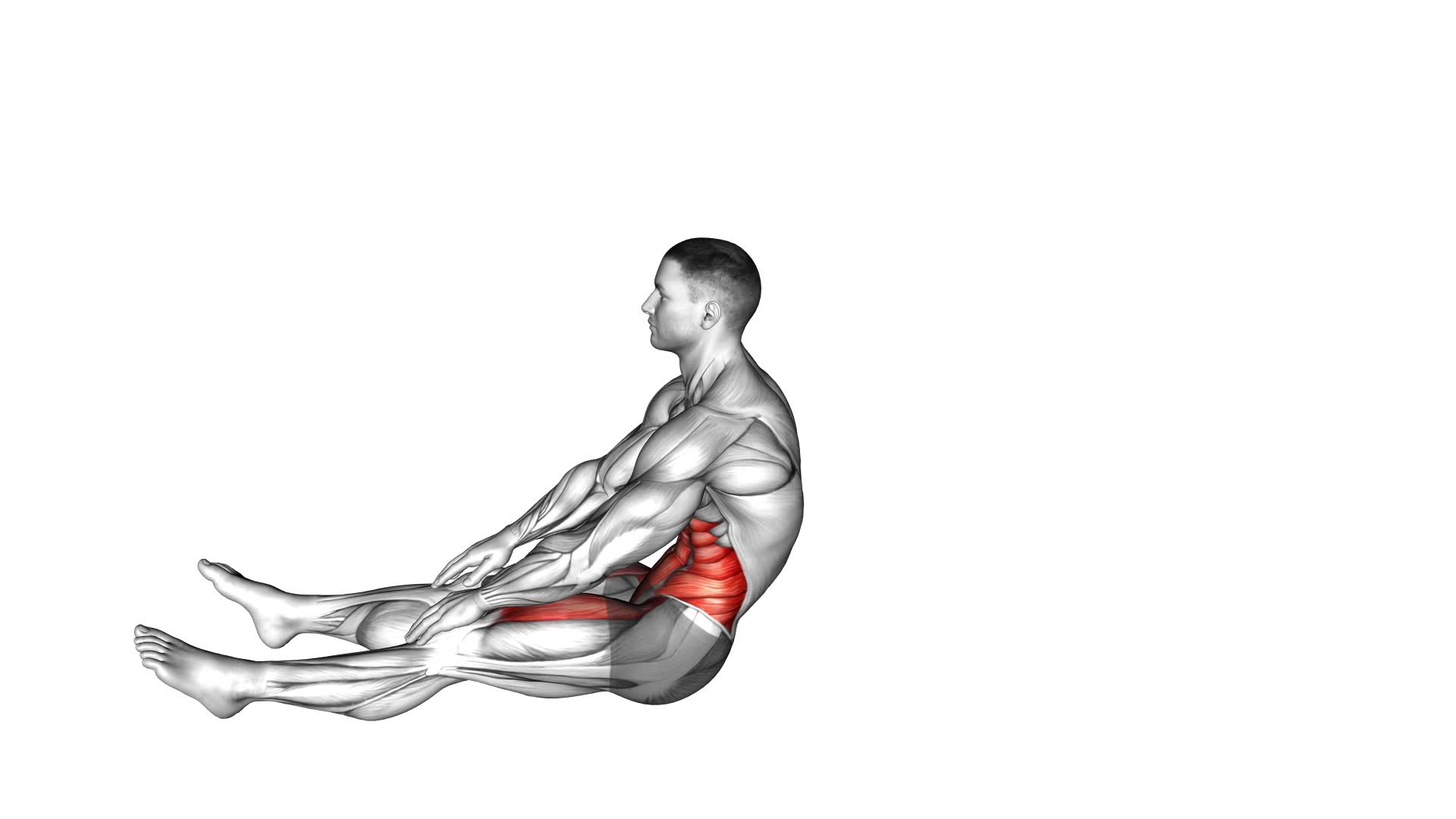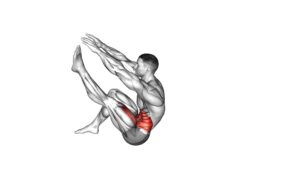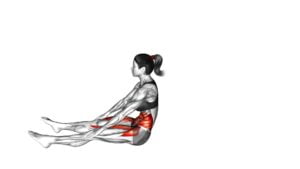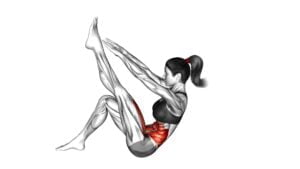Straight Leg Sit-Up – Video Exercise Guide & Tips

Are you looking to strengthen your core and build a stronger, more defined midsection? Look no further than the straight leg sit-up!
Watch This Exercise Video
In this video exercise guide, we'll show you the proper form and technique, common mistakes to avoid, and variations to keep challenging yourself.
Increase the intensity of your workouts and achieve better results with our expert tips.
Get ready to take your abdominal training to the next level!
Key Takeaways
- Straight leg sit-ups significantly improve core strength and stability.
- They engage multiple muscles in the abdomen, lower back, and hips.
- Straight leg sit-ups can help improve posture and support the spine.
- They also promote increased flexibility in the hamstrings and lower back.
Benefits of Straight Leg Sit-Ups
You will experience significant improvements in core strength and stability by incorporating straight leg sit-ups into your exercise routine. This exercise specifically targets the muscles in your abdomen, lower back, and hips, helping to build a strong and stable core. By performing straight leg sit-ups, you engage your rectus abdominis, obliques, and transverse abdominis, which are all essential in maintaining proper posture and supporting your spine.
Additionally, straight leg sit-ups also contribute to increased flexibility. As you bend forward to touch your toes, your hamstrings and lower back muscles stretch, promoting greater range of motion in these areas. This can be especially beneficial for athletes or individuals involved in activities that require a good amount of flexibility, such as dancing or martial arts.
To maximize the benefits of straight leg sit-ups, it's important to maintain proper form. Lie on your back with your legs straight and your arms extended overhead. Engage your core and slowly sit up, reaching forward with your hands toward your toes. As you lower back down, control the movement and repeat for the desired number of repetitions.
Incorporating straight leg sit-ups into your exercise routine won't only improve your core strength and stability but also enhance your flexibility, making it a valuable addition to any fitness program.
Proper Form and Technique
Maintaining proper form and technique is crucial when performing straight leg sit-ups to ensure maximum effectiveness and minimize the risk of injury. Here are some important tips to help you maintain proper form and technique during your straight leg sit-ups:
- Keep your back flat: Avoid rounding your back as you come up. Engage your core muscles to keep your spine in a neutral position throughout the movement.
- Engage your core: Focus on contracting your abdominal muscles as you lift your torso off the ground. This will help to maximize the effectiveness of the exercise and target your abs.
- Don't pull on your neck: Instead of using your neck and shoulders to pull yourself up, use your core muscles to initiate the movement. Place your hands lightly behind your ears for support, but avoid pulling on your neck.
- Modify for beginners: If you're new to straight leg sit-ups or find them challenging, you can start by bending your knees slightly. This modification will reduce the strain on your lower back and make the exercise more manageable.
By following these tips, you can perform straight leg sit-ups with proper form and technique, ensuring that you get the most out of your workout while minimizing the risk of injury.
Now, let's move on to the next section where we'll discuss common mistakes to avoid during straight leg sit-ups.
Common Mistakes to Avoid
To ensure optimal results and prevent potential injuries, it's important to be aware of common mistakes that should be avoided when performing straight leg sit-ups. Proper technique is crucial for maximizing the effectiveness of this exercise while minimizing the risk of strain or injury.
One common mistake is using momentum to lift your upper body instead of engaging your core muscles. This can lead to ineffective results and potential strain on your lower back.
Another mistake to avoid is pulling on your neck with your hands. This can strain your neck muscles and take away the focus from your abdominal muscles.
Additionally, it's important to maintain a slow and controlled movement throughout the exercise. Rapid movements can compromise your form and increase the risk of injury.
Lastly, avoid letting your feet lift off the ground during the movement. Keep your feet firmly planted on the floor to engage your core muscles fully.
Variations and Progressions
Now, let's explore how you can add variations and progressions to your straight leg sit-up routine. By incorporating advanced techniques and modified versions, you can challenge your core muscles in new ways and continue to make progress. Here are four variations and progressions to consider:
- Weighted Straight Leg Sit-Up: Hold a dumbbell or a weighted plate against your chest while performing the sit-up. This added resistance increases the intensity and engages your core muscles even more.
- Decline Straight Leg Sit-Up: Position yourself on a decline bench with your feet secured. This variation places more emphasis on your lower abs and can help to strengthen your entire core.
- Medicine Ball Straight Leg Sit-Up: Hold a medicine ball with both hands and extend your arms overhead. As you sit up, bring the ball towards your feet. This variation not only challenges your core muscles but also works your shoulders and upper body.
- Russian Twist Straight Leg Sit-Up: Start in a sit-up position, but instead of bringing your torso all the way up, twist your upper body to one side, then to the other. This exercise targets your obliques and adds a rotational element to the movement.
By incorporating these variations and progressions into your straight leg sit-up routine, you can continue to challenge your core muscles and see continued improvements.
Now, let's move on to the next section where we'll discuss tips for increasing intensity and results.
Tips for Increasing Intensity and Results
To maximize your results and increase the intensity of your straight leg sit-up routine, consider incorporating the following tips.
- One effective way to increase resistance and challenge your muscles is by incorporating weights. You can hold a dumbbell or a weight plate against your chest while performing the straight leg sit-ups. Start with a weight that feels challenging but manageable, and gradually increase the weight as you get stronger.
- Another option is to hold the weight above your head, which will engage your core muscles even more.
- Additionally, you can try performing the straight leg sit-ups on an incline bench or decline bench to further increase the difficulty. This change in angle will require your core muscles to work harder to stabilize your body.
Remember to maintain proper form throughout the exercise and focus on engaging your abdominal muscles.
Frequently Asked Questions
How Many Straight Leg Sit-Ups Should I Do in a Workout Session?
When it comes to straight leg sit-ups, the number you should aim for in a workout session depends on your fitness level and goals. It's important to start with proper form and gradually increase the intensity and repetitions.
Straight leg sit-up variations can target different muscle groups and add variety to your routine. Remember to listen to your body and consult with a fitness professional for personalized guidance.
Can I Perform Straight Leg Sit-Ups if I Have Lower Back Pain?
If you have lower back pain, it isn't recommended to perform straight leg sit-ups. These exercises can put strain on your lower back and worsen your pain. Instead, consider alternative exercises that are gentler on your back, such as bent-knee sit-ups or pelvic tilts.
These exercises can still target your abdominal muscles without aggravating your lower back. It's important to listen to your body and consult with a healthcare professional for personalized advice.
Are Straight Leg Sit-Ups More Effective Than Regular Sit-Ups for Targeting the Abdominal Muscles?
Straight leg sit-ups are often considered more effective than regular sit-ups for targeting the abdominal muscles. By keeping your legs straight, you engage your lower abs more intensely. This increased activation can lead to greater muscle development and improved core strength. Additionally, straight leg sit-ups require more balance and stability, further engaging your core muscles.
However, it's important to note that both straight leg sit-ups and crunches have their own benefits, so it's best to incorporate a variety of exercises into your abdominal workout routine.
Is It Necessary to Have a Spotter or Partner When Performing Straight Leg Sit-Ups?
When performing straight leg sit-ups, having a spotter or partner isn't necessary but can be beneficial. They can provide support and assistance in case you need help during the exercise.
However, if you prefer to work out alone, there are alternative exercises that can target your abdominal muscles effectively without the need for a spotter.
These include exercises such as planks, Russian twists, and bicycle crunches.
Can I Incorporate Weights or Resistance Bands Into My Straight Leg Sit-Up Routine for Added Intensity?
Yes, you can definitely incorporate weights or resistance bands into your straight leg sit-up routine for added intensity. Using weights for straight leg sit-ups can help to increase the resistance and challenge your abdominal muscles even more.
On the other hand, using resistance bands for straight leg sit-ups can provide a different type of resistance throughout the movement, engaging your muscles in a unique way.
Both methods can help you to build strength and improve overall core stability.
Conclusion
In conclusion, straight leg sit-ups are an effective exercise for strengthening and toning the abdominal muscles.
By maintaining proper form and avoiding common mistakes, you can maximize the benefits of this exercise.
Additionally, incorporating variations and progressions can help challenge your muscles and further enhance your results.
Remember to gradually increase intensity and always listen to your body to avoid injury and achieve optimal results.

Author
Years ago, the spark of my life’s passion ignited in my mind the moment I stepped into the local gym for the first time. The inaugural bead of perspiration, the initial endeavor, the very first surge of endorphins, and a sense of pride that washed over me post-workout marked the beginning of my deep-seated interest in strength sports, fitness, and sports nutrition. This very curiosity blossomed rapidly into a profound fascination, propelling me to earn a Master’s degree in Physical Education from the Academy of Physical Education in Krakow, followed by a Sports Manager diploma from the Jagiellonian University. My journey of growth led me to gain more specialized qualifications, such as being a certified personal trainer with a focus on sports dietetics, a lifeguard, and an instructor for wellness and corrective gymnastics. Theoretical knowledge paired seamlessly with practical experience, reinforcing my belief that the transformation of individuals under my guidance was also a reflection of my personal growth. This belief holds true even today. Each day, I strive to push the boundaries and explore new realms. These realms gently elevate me to greater heights. The unique combination of passion for my field and the continuous quest for growth fuels my drive to break new ground.







